Cluster Administration Guide
A cluster is an abstraction within a product, created to realize horizontal scaling and maintain consistent state of servers of this very cluster. The key goal is to create a platform for the cluster load balancer (hereinafter referred to as Workload Balancer or WLB) to work and achieve maximum economic efficiency due to the fact that the balancer is not limited by anything and can place a virtual machine on any server in the cluster.
Unused servers are shut down by the balancer, which significantly reduces the cost of electricity for One-Premise or the cost of deployment on cloud capacity (Amazon, Azure and others) due to the on-demand payment scheme. Read more: Nextop Load Balancer
The section is available in the Clusters tab of the navigation menu.
It is a tabular view listing all clusters created in the system.
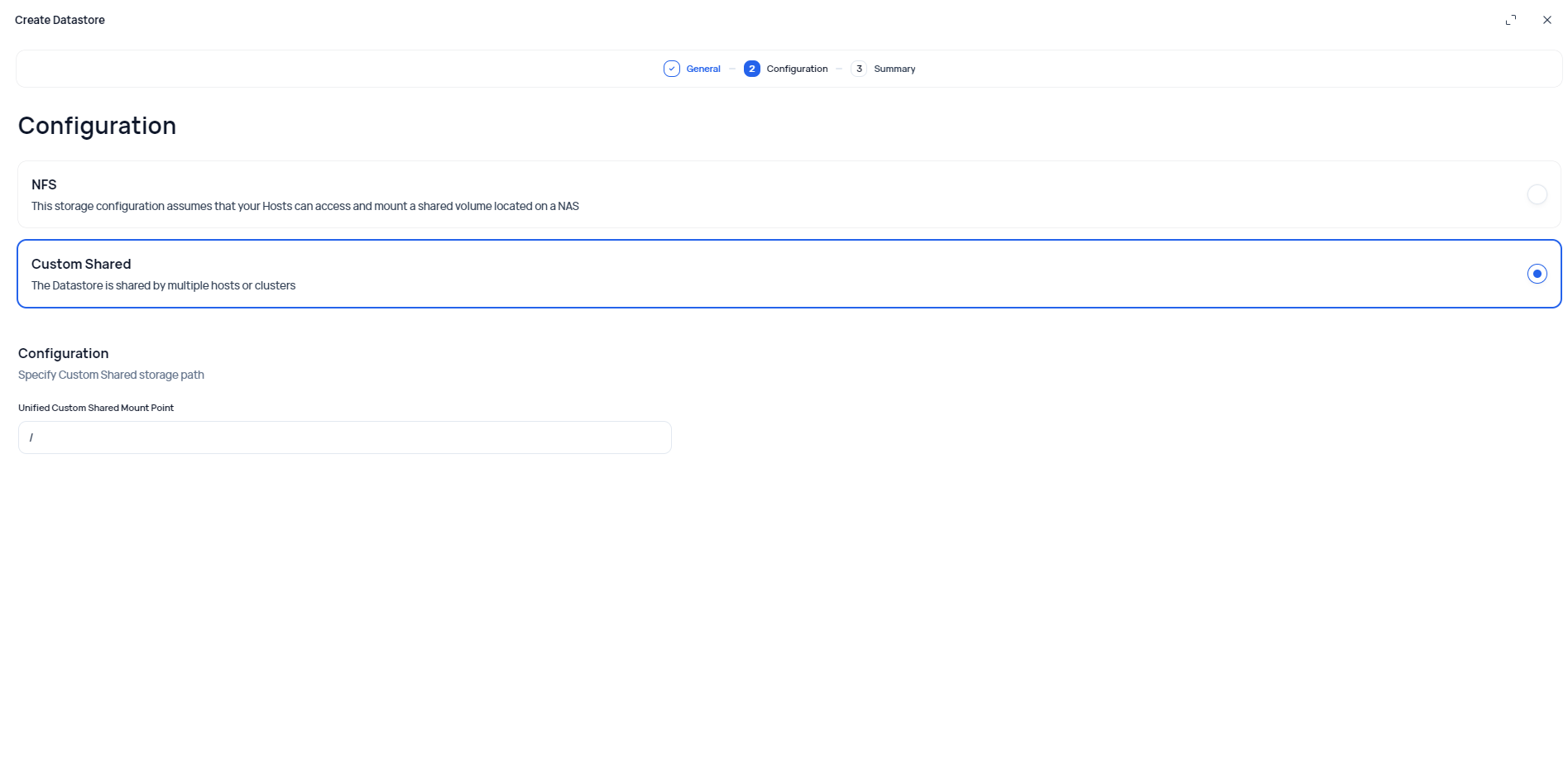
Entity statuses
Status name | Definition |
|---|---|
Healthy | The cluster is empty or all of its Hosts are in status Connected. |
Partially Unhealthy | At least one Host must be in the status Connected. |
Unhealthy | In all other cases the cluster has the status Unhealthy. |
Creation
To add a new cluster, you need to select the "Create Cluster" button. And then follow the steps
General - here you need to specify a name for the cluster and a note if necessary
Configuration - the ability to enable/disable the fault tolerance and load balancing systems of the cluster
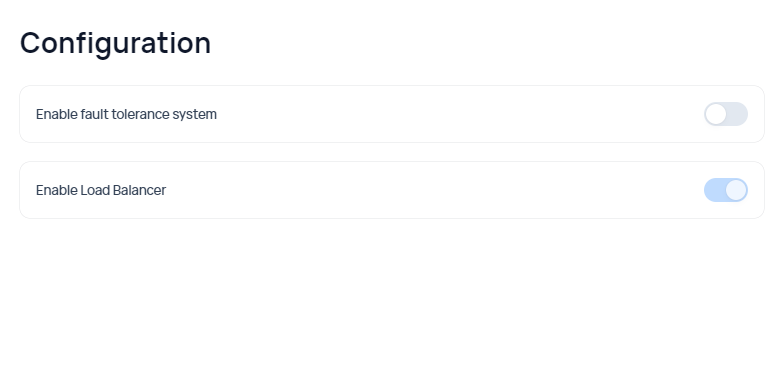
Networking

Attached Switches - A list of attached switches to the current cluster.
For each of the following cluster system services, its Internal Adapter - Representative is selected:
AirCloud Internal Server
SURPRISE Protocol
Global WLB Configuration (Step is not output if the system is shut down in step 2) - CPU / RAM weights for the load balancing system operation.

WLB Regular Profile (Step not displayed if the system is shut down in step 2)

Optimization mode - Balancing strategy - Max Performance or Max Density
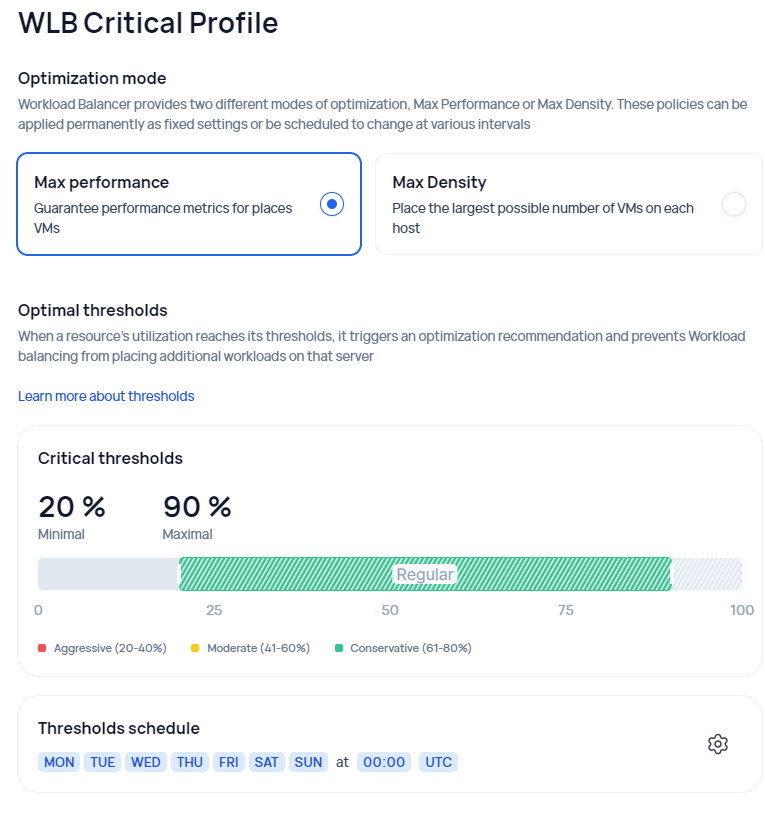
Profile Thresholds - Thresholds for the desired RAM / CPU utilization of the cluster hosts.
Balancing Schedule - Set up a balancing schedule
WLB Critical Profile - Similar to the item above, but for the critical profile.
Summary - Summarizes all of the above items
Read more about the cluster load balancer and its configuration: Nextop Load Balancer
Modification
To modify a cluster, hover over the required item in the table and select the edit icon.
The editing items are similar to creating a cluster.
Deleting
To delete a cluster, hover over the required element in the table, open the additional menu and select the "Delete" item.
Main sections of the resource
The following items are available for each cluster (except for items related to the balancing system).
Summary
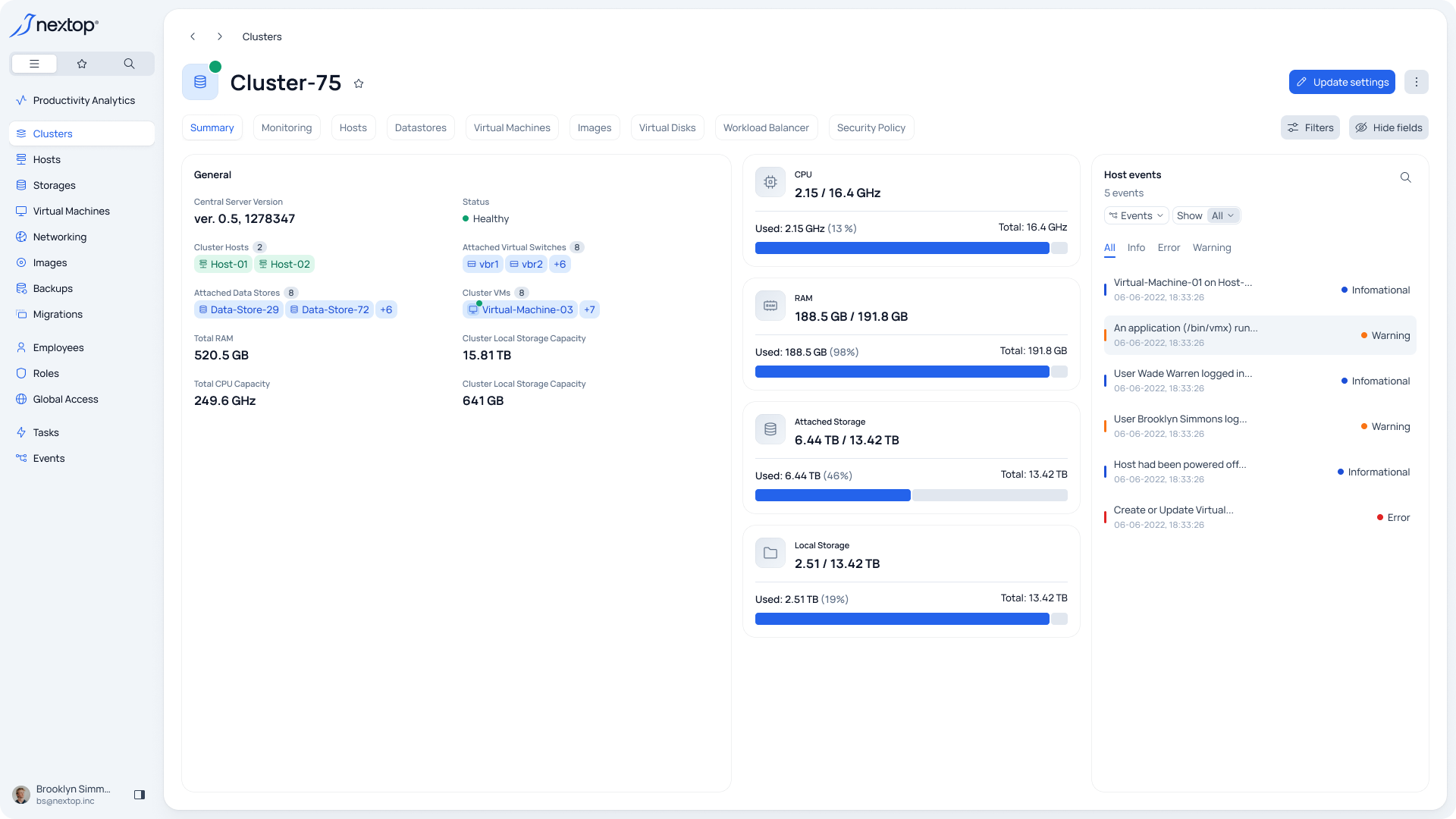
This section consists of three main blocks:
General - this lists basic data about the cluster and the resources used
Block with basic metrics for the cluster
Block with tasks and events, where the selected cluster is specified as "Target"
Monitoring
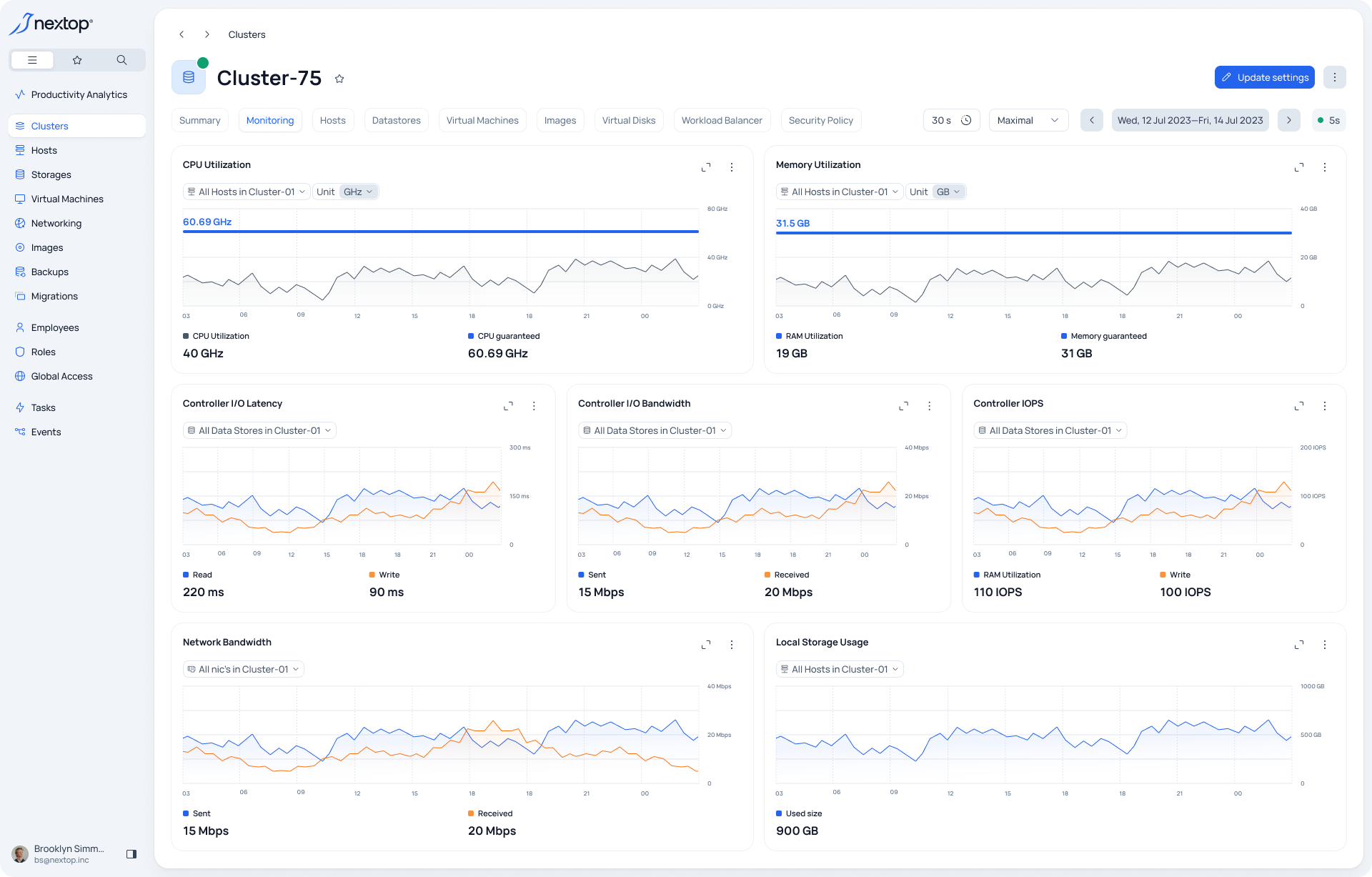
Block with graphical representation of metrics by cluster. For more information about monitoring management tools, please read Resources Monitoring Tutorial
Hosts
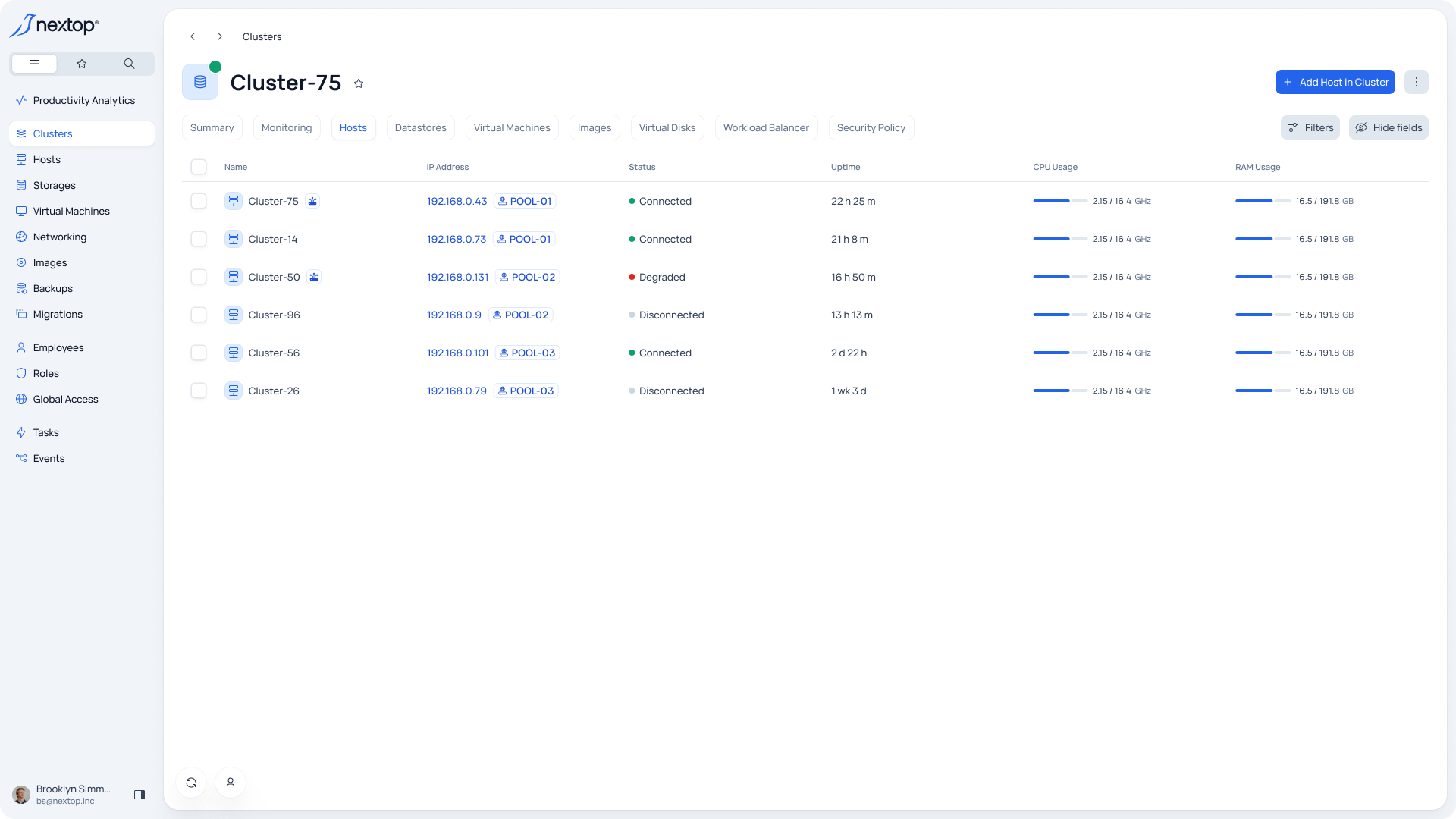
A tabular view listing all servers created in the selected cluster
Adding a new server to the cluster is available. To do this, click on the "Add host in cluster" button. More information about the procedure of adding a server: Hosts Administration Guide
Data Stores
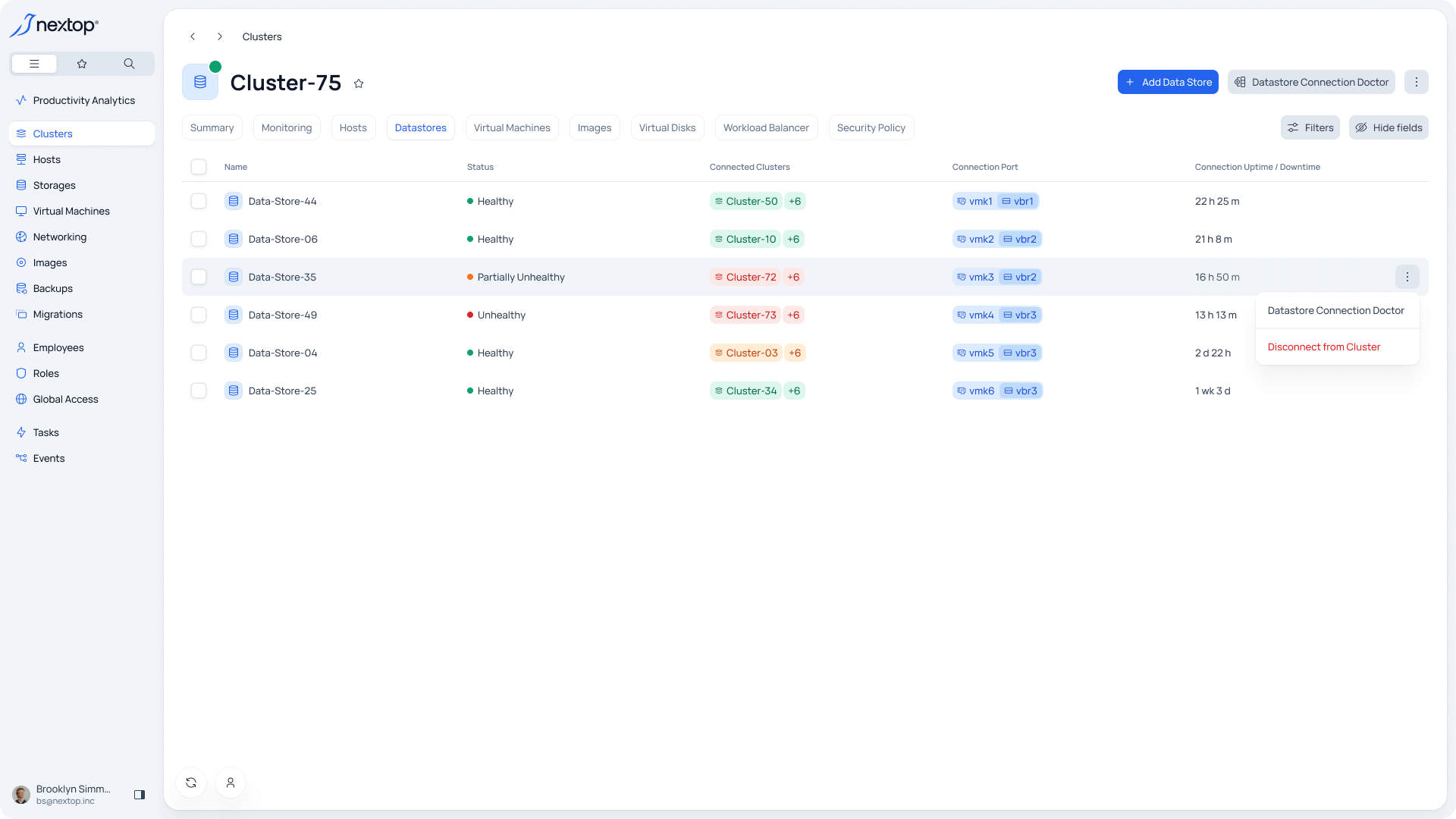
A tabular view listing all the storages connected to the cluster.
To connect a new datastore to the cluster, click on the "Connect datastore" button. more information about the procedure: https: Storages Administration Guide | Connecting-a-storage-to-the-cluster
If you need to restore connections for a storage, you should select it in the list, open the additional menu and select "Datastore connection doctor". The execution status can be seen in the cluster tasks and events. Storages Administration Guide | Procedure-of-reconnecting-to-the-cluster
To disconnect a storage, select it in the list, open the additional menu and select "Disconnect form cluster". Storages Administration Guide | Disconnecting-storage-from-cluster
Virtual machines
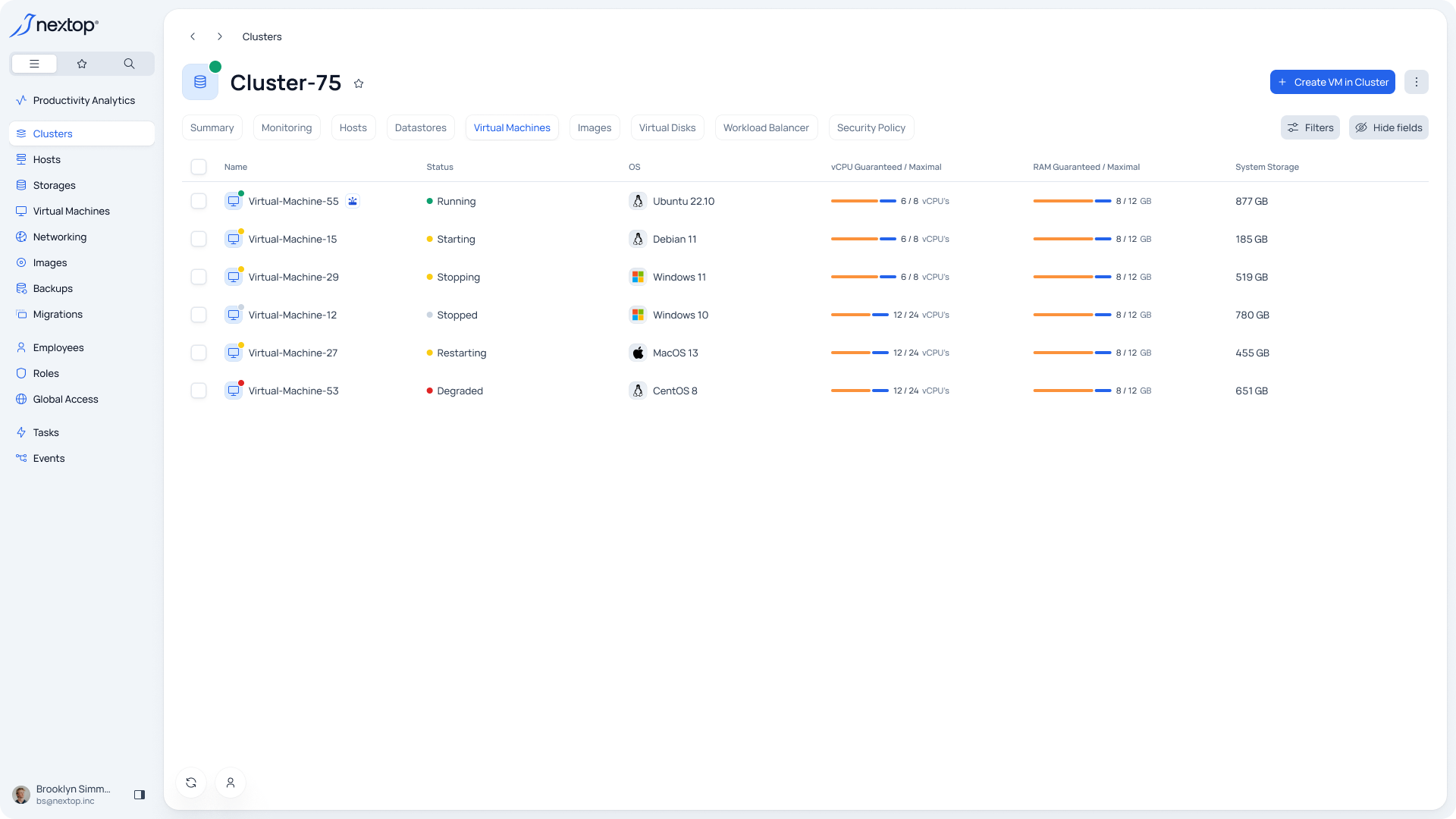
Tabular representation of all virtual machines created in the cluster.
To change a virtual machine, you should hover over the required item in the table and select the edit icon. Learn more about creating and editing virtual machines Storages Administration Guide | Procedure-of-reconnecting-to-the-cluster
To delete a virtual machine, you should hover over the required item in the table, open the additional menu and select the "Delete" item.
Workload balancer
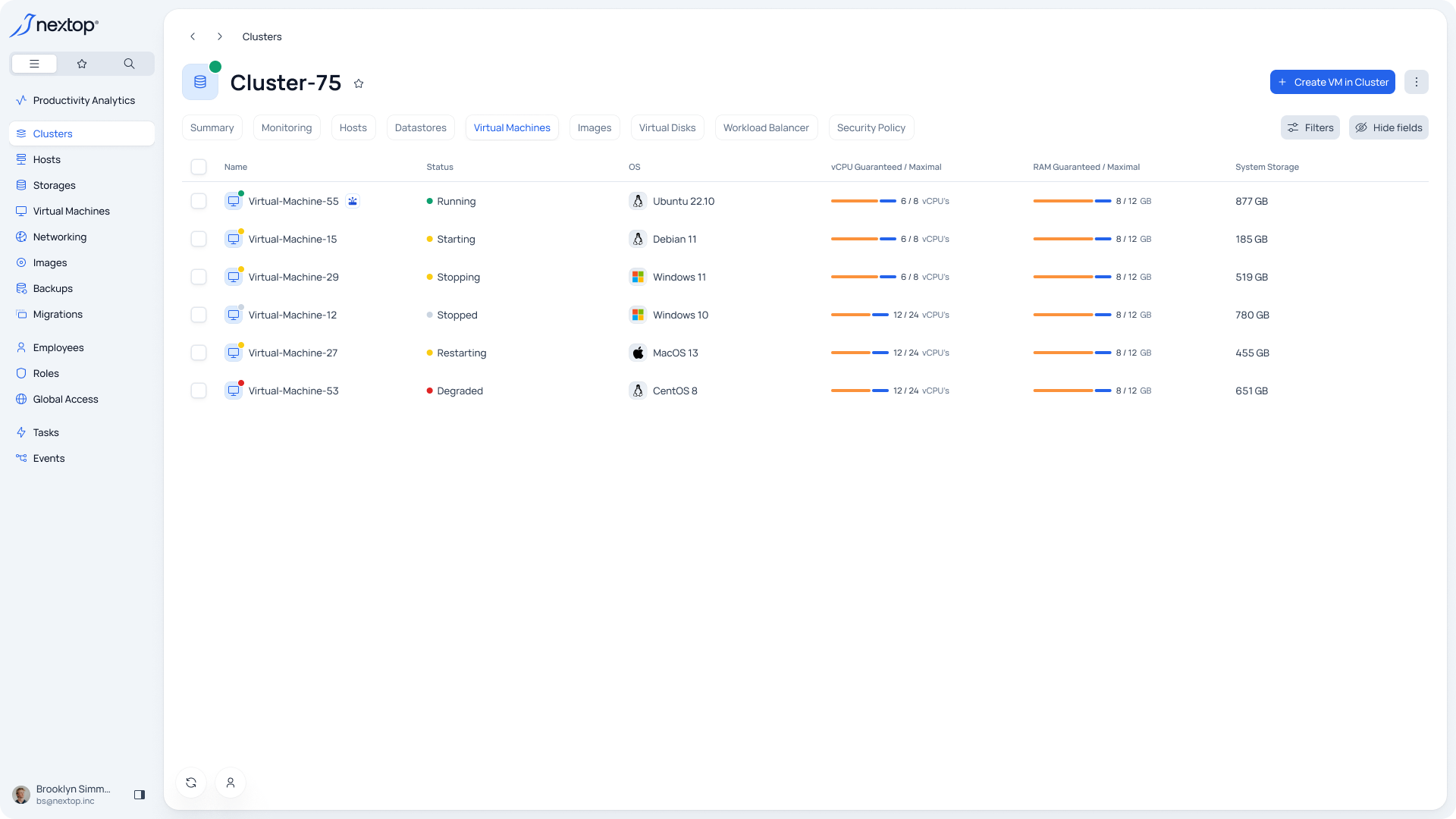
It consists of several blocks
The General section displays the current graph of the cluster balancing state in the form of a Scatter Plot with the axes of the specified constraints plotted.
Green dots mark the servers that are balanced from the point of view of the balancer's regular profile;
Yellow dots mark servers that are balanced from the point of view of the critical balancer profile;
Red - unbalanced servers, which will be balanced by the nearest scheduled balancing. If you observe such servers frequently and for long periods of time, increase the cluster balancing frequencies.Balancing History Chart - This chart shows how the cluster looked in terms of being within the specified thresholds of the standard balancing profiles;
Balancing History - The balancing history of the cluster.
To start balancing immediately, you should click on the "Balance now" button.
To change the system profiles you should press "Configure Workload Balancer". The configuration repeats the steps described in the cluster creation in steps 5-6.
Security policy
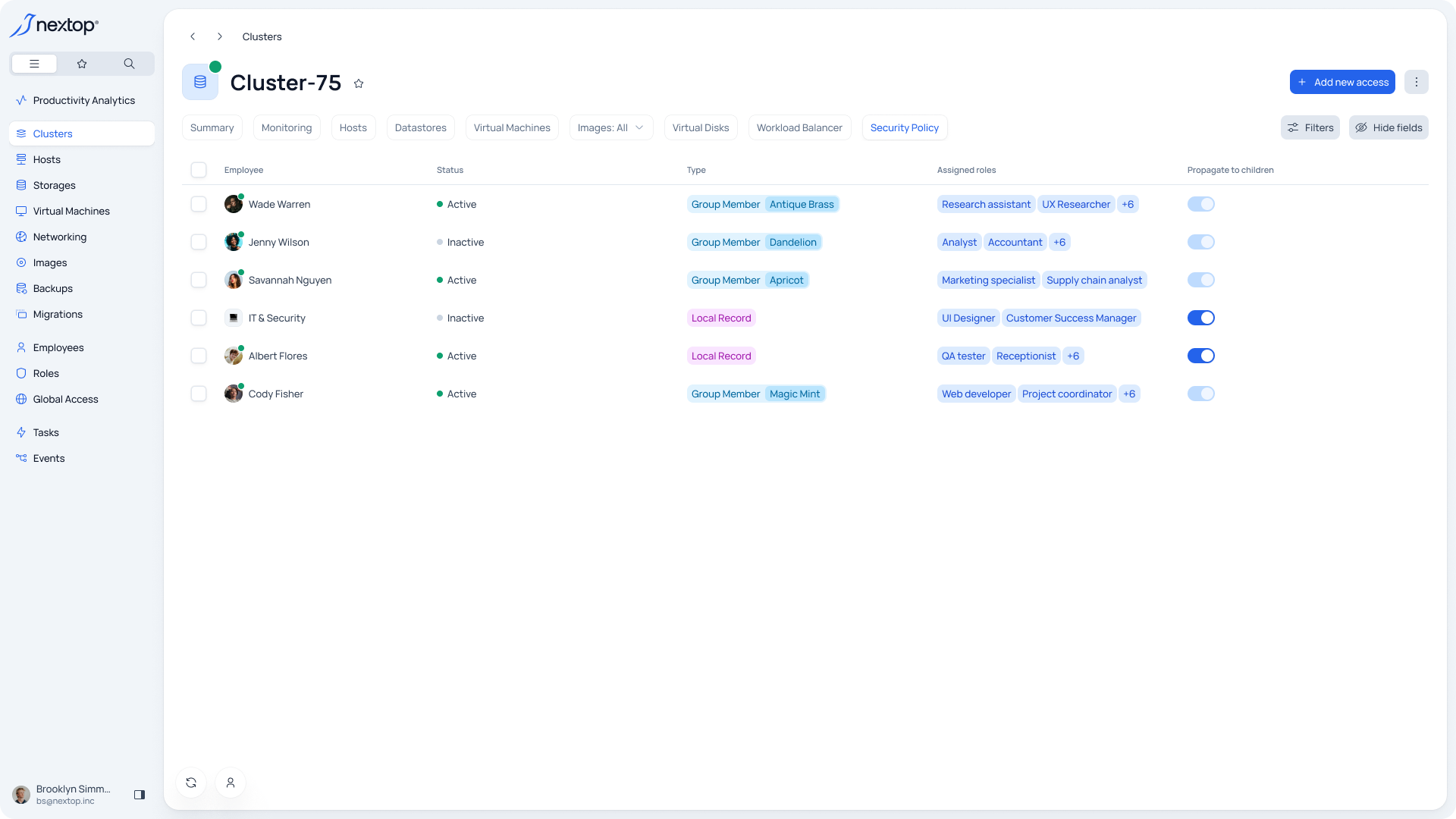
A tabular view listing the roles and the users to whom these roles are assigned.
To add a new user, select the "Provide access" button. And then select the user/group and the set of permissions set in the role you added earlier. You can read more Granting local access to a resource
To modify an access record, you should hover over the required item in the table and select the edit icon.
To delete permissions, hover over the required item in the table, open the additional menu and select the "Delete" item.
